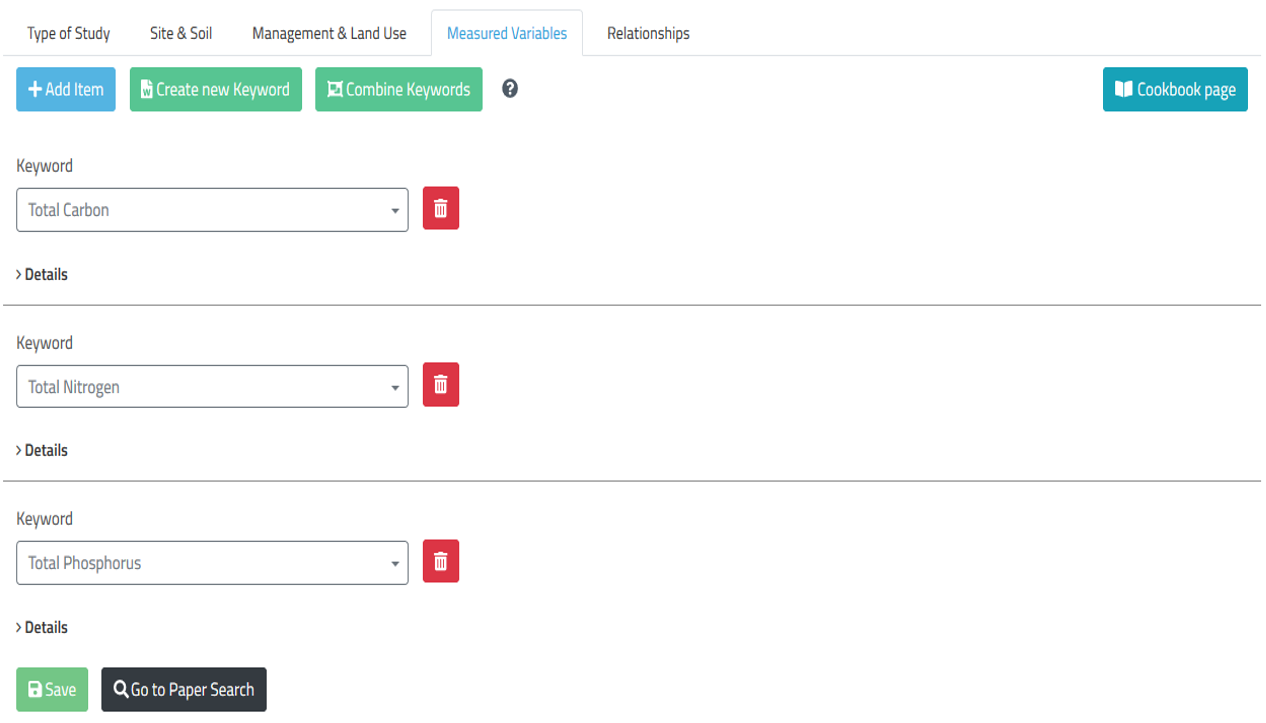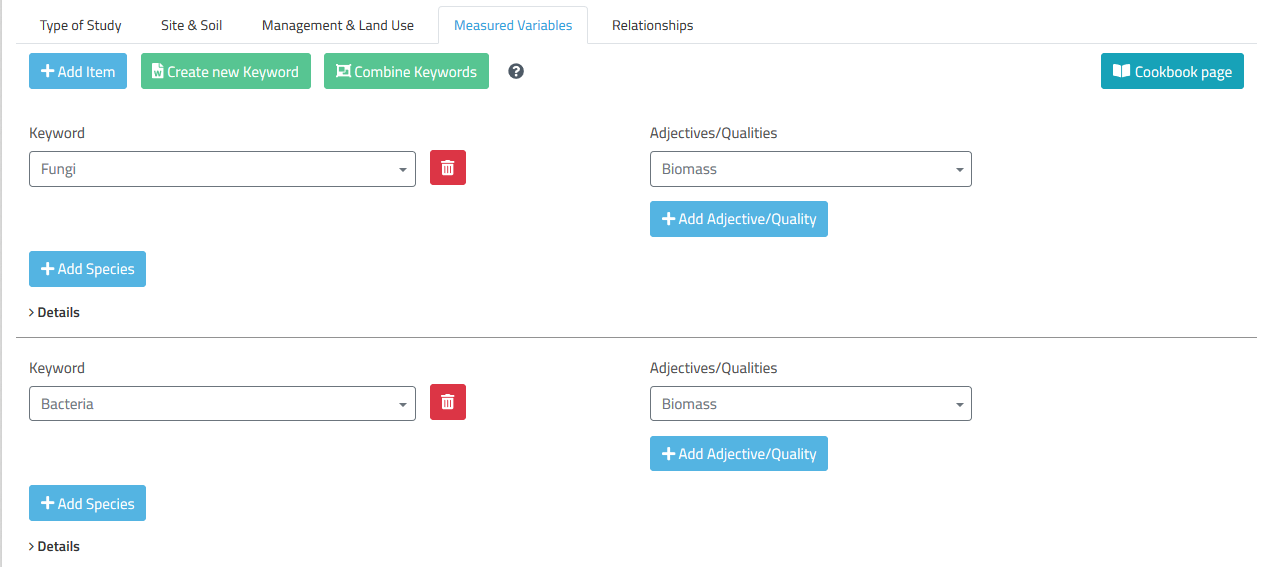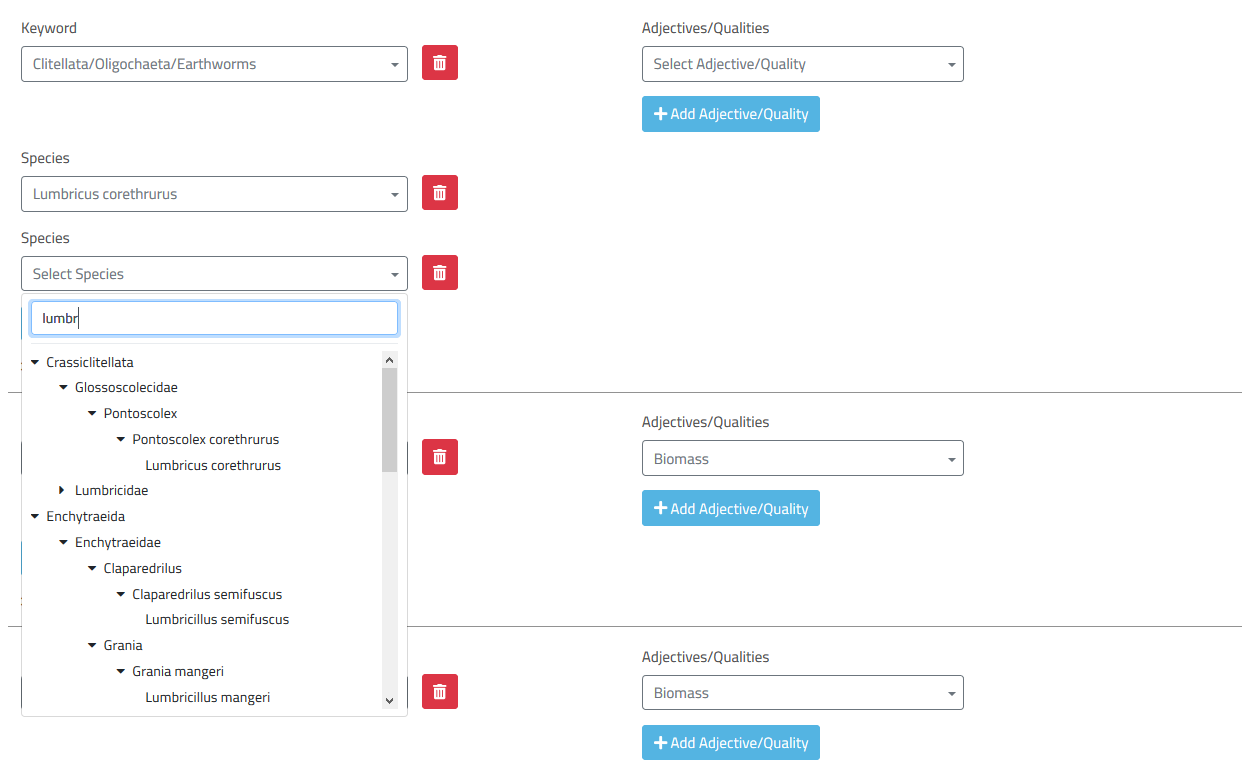Measured Variables
General
Here, you can create a list of measured variables, which were analyzed for changes, in the article. The elements from this list can later be used to build causal/directed and/or correlative/undirected relationships, which were analyzed in the article. Variables, driving a relationship (e.g. pre-arranged bulk densities, water contents) including organismal soil treatments like earthworms, mycorrhiza, bacteria, etc. should be listed here, too. They can serve as driver (driving variable) or driven variable in a causal relationship and/or as a variable in a correlative relationship later. More on relationships on the respective tab!

Biological metrics
The Klib keyword tree only contains a few prepared keywords, where biological entities (e.g. Bacteria, Microbes, etc.) are combined with a metric (e.g. Microbial biomass). For all other biological entity-metric combinations you have to create them on-the-fly while entering your measured variables. As soon, as you select an entity (e.g. fungi) an additional dropdown appears, prompting you to select a metric for your entity. Hence, keywords like "fungal biomass" have to be entered in two steps as "fungi - biomass" in the Klib. Please do not enter terms like "fungal biomass" using the "create new keyword" tool!

Biological taxonomy
The Klib keyword tree does only contain specific faunal groups, which can be on the taxonomic level of a Genus, Family or an Order. To be able to offer you opportunities to enter more detailed taxonomic information, we connect our tree to the taxonomic collections of Edaphobase and Catalogue of Life. Hence, as soon as a biological entity is selected, an additional list of species, observed during the study, can be created using the "add species" button. When creating a relationship only the keywords from the Klib tree will show up for selection. If you enter e.g. "Clitellata/Oligochaeta/Earthworms" and biomass and define two species additionally, only "Clitellata/Oligochaeta/Earthworms - biomass" will show up for selection in the "Relationships" tab. Despite not being shown, the species information is still there and will be recorded! But, species groups can not be compared in the "Relationships" tab, when belonging to the same Klib tree entity! Hence, the impact of Lumbricus corethrurus on bulk density can not be compared with that of Lumbricillus semifuscus for example.
